This repository contains the dataset, code, and test results for the baseline method proposed in the paper Wide-angle Image Rectification: A Survey. Based on three types of distortion models, i.e., the FOV model (FOV for short), the one-parameter division model (DM for short) and the equidistant model (ED for short), and three open-source datasets, i.e., the ADE20k dataset, the WireFrame dataset, and the COCO dataset, totally nine synthesized datasets are generated. Each dataset is named after the distortion model that is used and the original dataset that the standard images are borrowed from. For example, if a dataset is synthesized based on the ED model using the standard images from the COCO dataset, it is named as an ED COCO dataset.
The architecture of the deep network is illustrated below.
The network is based on ResNet50, Which is pre-trained on ImageNet. The output of the network is the regressed distortion parameter
| FOV ADE20k model | DM ADE20k model | ED ADE20k model |
|---|---|---|
| weights | weights | weights |
For each standard dataset, we synthesized three distorted datasets based on the three distortion models, i.e., the FOV dataset, the DM dataset, and the ED dataset. The three deep models, i.e., the FOV model, the DM model, and the ED model, are tested one by one on these datasets. So we got a 3 by 3 metrics matrix for each standard dataset. Each row lists the results on different datasets while each column lists the results for different models. The metrics are listed below. Each table cell lists the ***PSNR/SSIM***. The visual results are available through the link listed below each table.
| FOV | DM | ED | |
|---|---|---|---|
| FOV | 26.43/0.85 | 16.65/0.45 | 18.84/0.54 |
| DM | 21.034/0.63 | 24.76/0.81 | 25.48/0.83 |
| ED | 18.83/0.56 | 23.37/0.75 | 26.01/0.84 |
The visual results are shown here
| FOV | DM | ED | |
|---|---|---|---|
| FOV | 26.45/0.86 | 16.65/0.51 | 19.06/0.61 |
| DM | 21.02/0.68 | 25.10/0.83 | 25.32/0.84 |
| ED | 19.02/0.63 | 23.77/0.79 | 25.83/0.85 |
The visual results are shown here
| FOV | DM | ED | |
|---|---|---|---|
| FOV | 25.91/0.84 | 16.09/0.43 | 18.51/0.53 |
| DM | 20.43/0.61 | 24.00/0.79 | 24.83/0.81 |
| ED | 18.50/0.55 | 22.73/0.74 | 25.45/0.83 |
The visual results are shown here
| ADE20k | WireFrame | COCO |
|---|---|---|
 |
 |
 |
 |
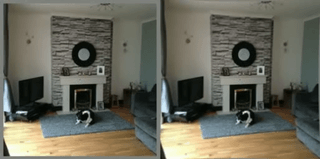 |
 |
 |
 |
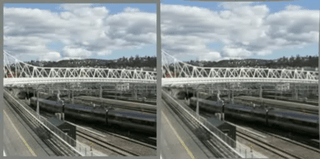 |
The real fisheye image has to be resized to 257x257 to match the input size of the network. But the distortion parameter
| AlfaA | LectureB | LibraryE | Warping time (ms) | |
|---|---|---|---|---|
| 256x256 | 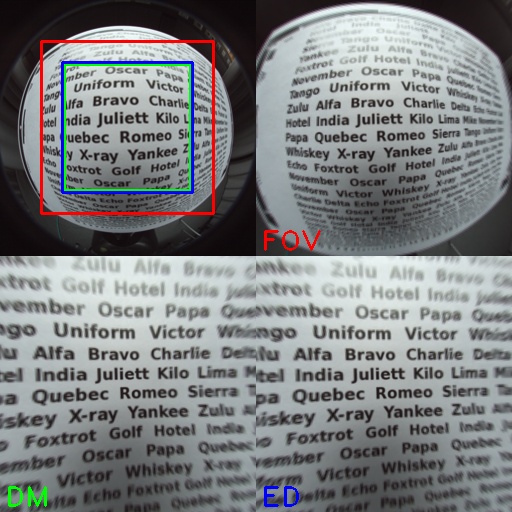 |
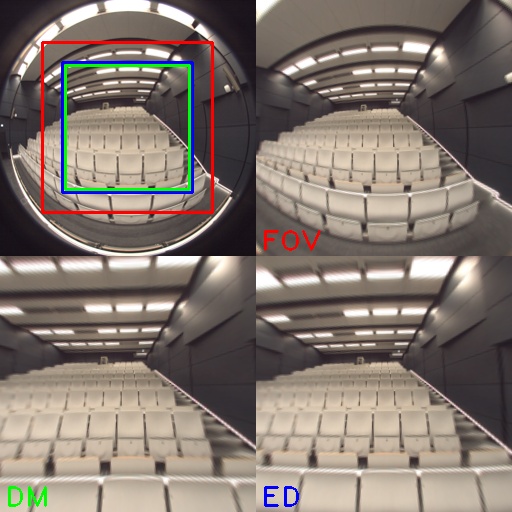 |
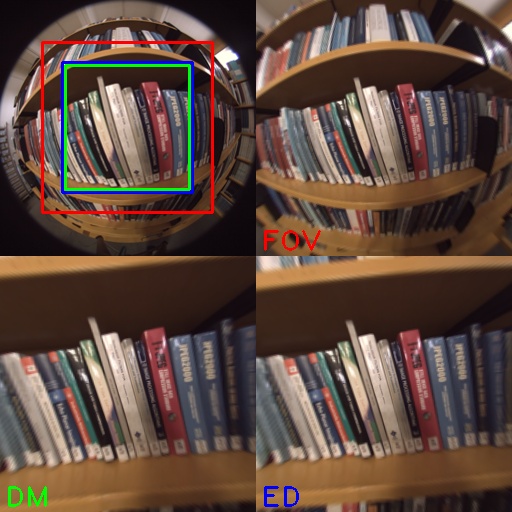 |
1.2 |
| 512x512 | 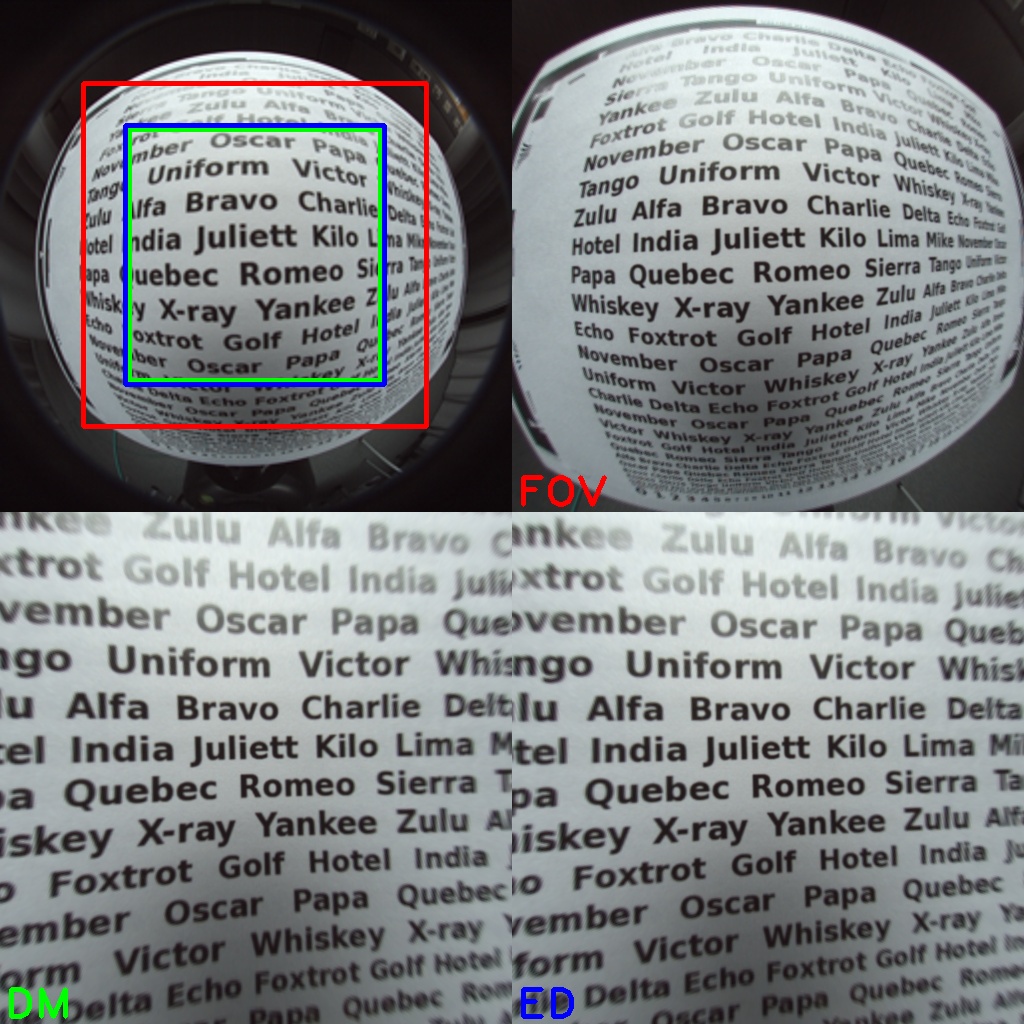 |
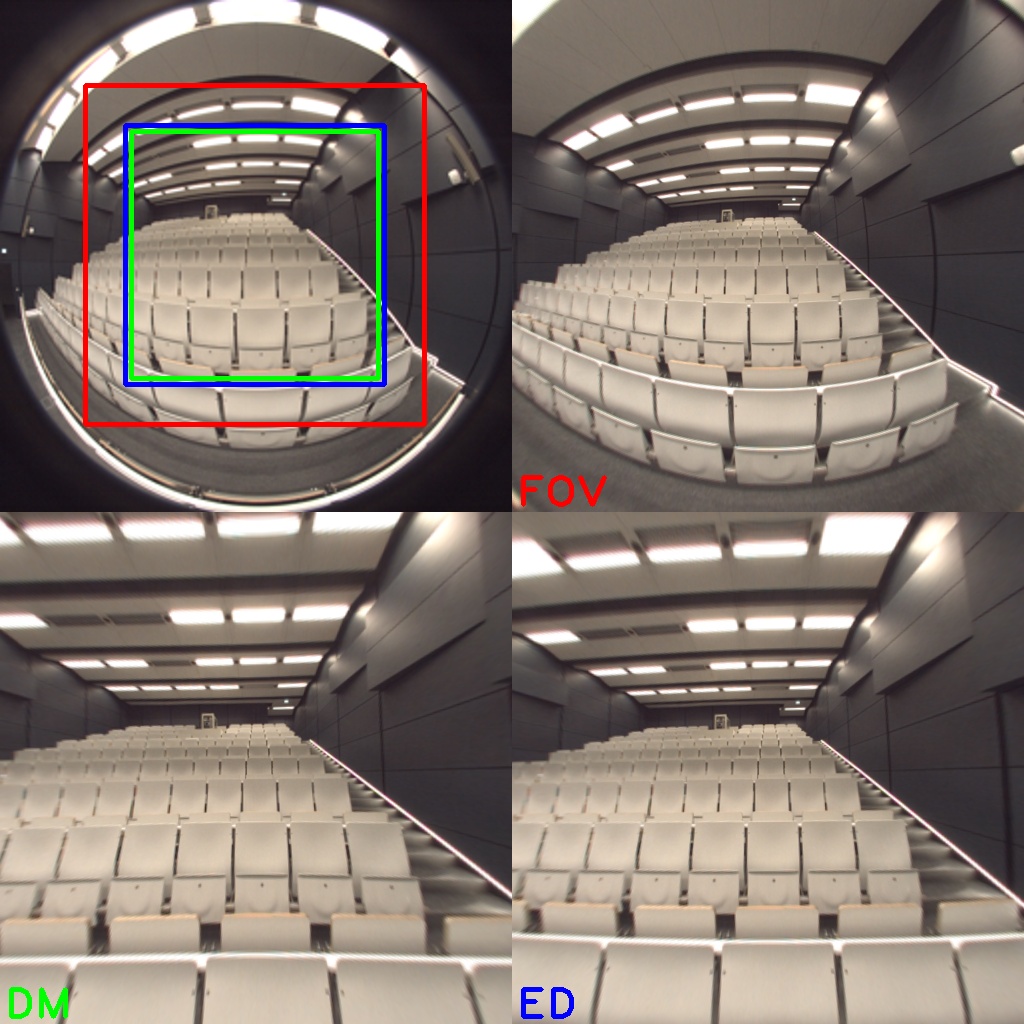 |
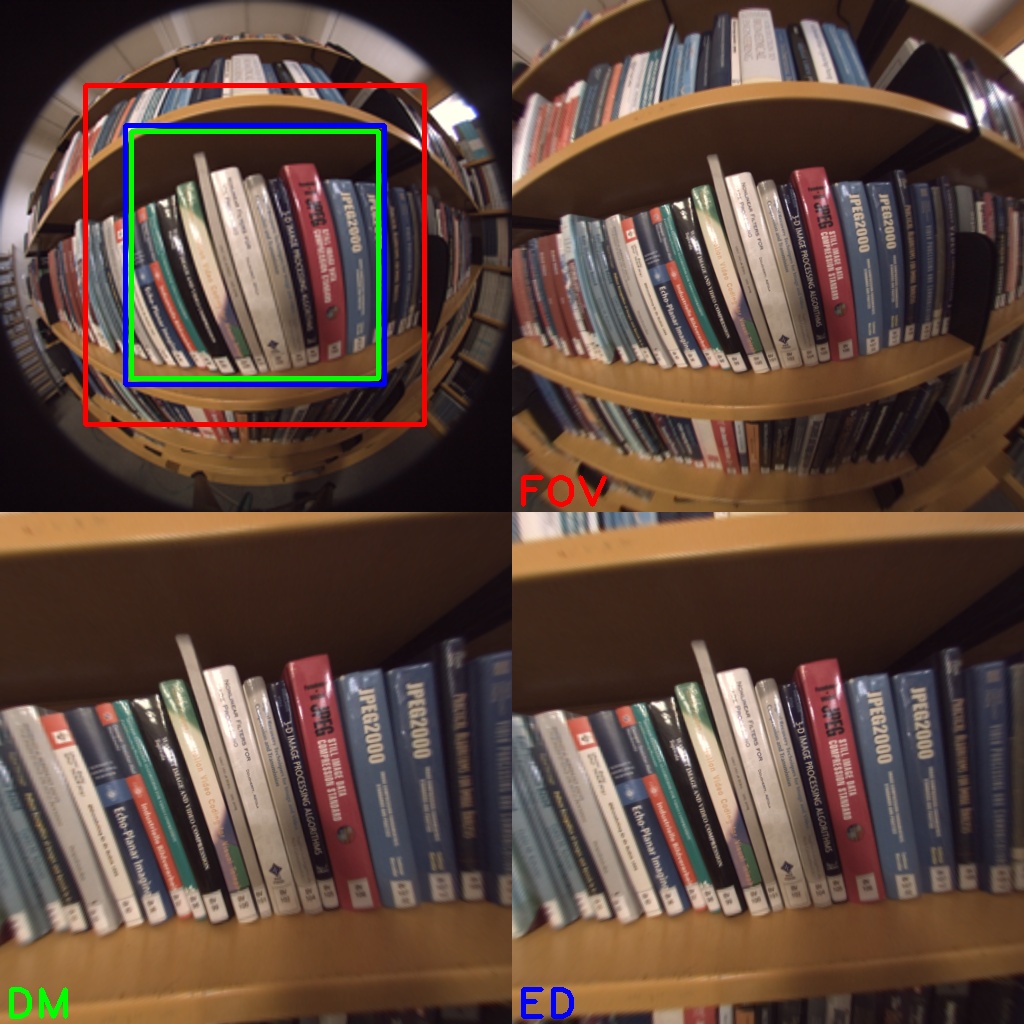 |
2.1 |
| 1024x1024 | 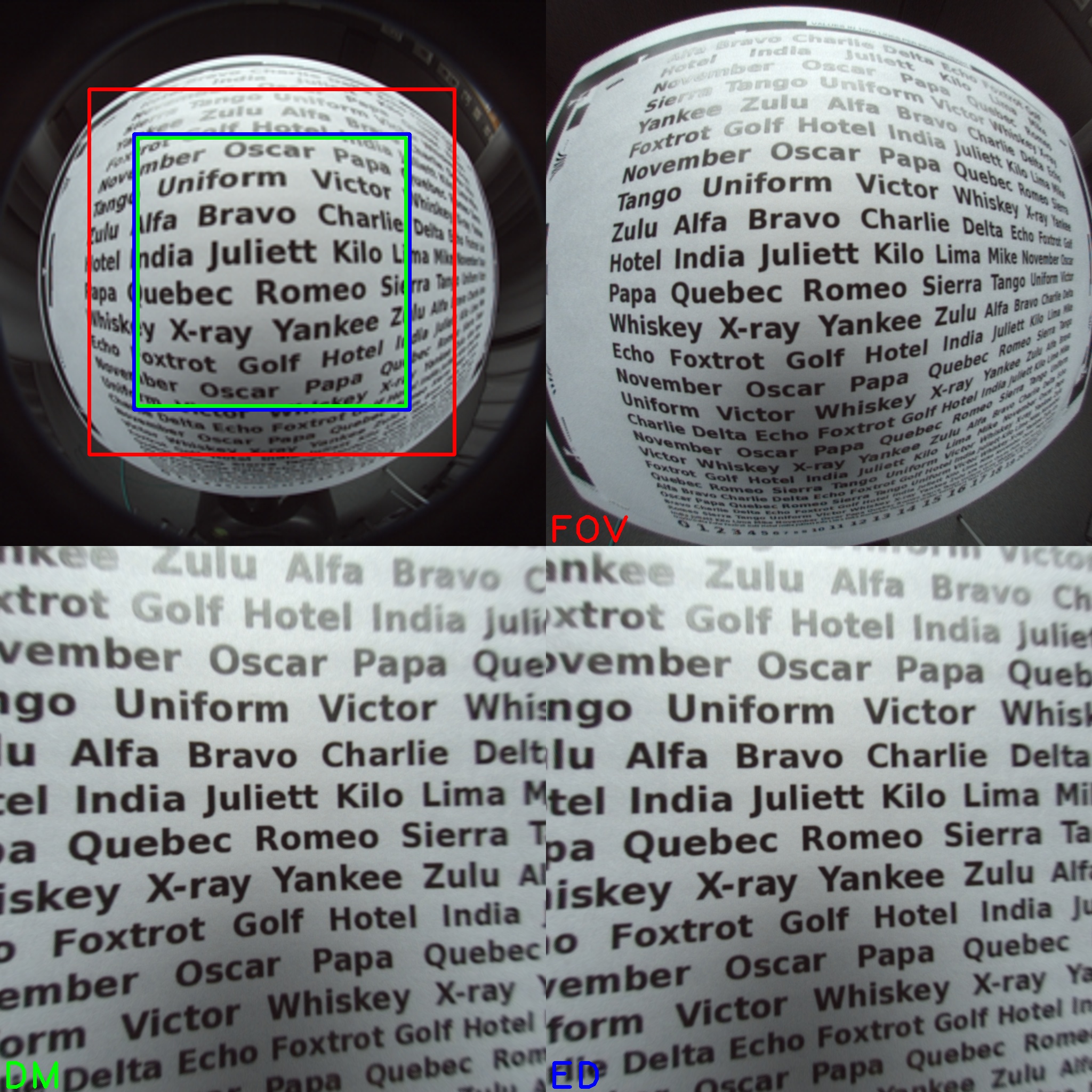 |
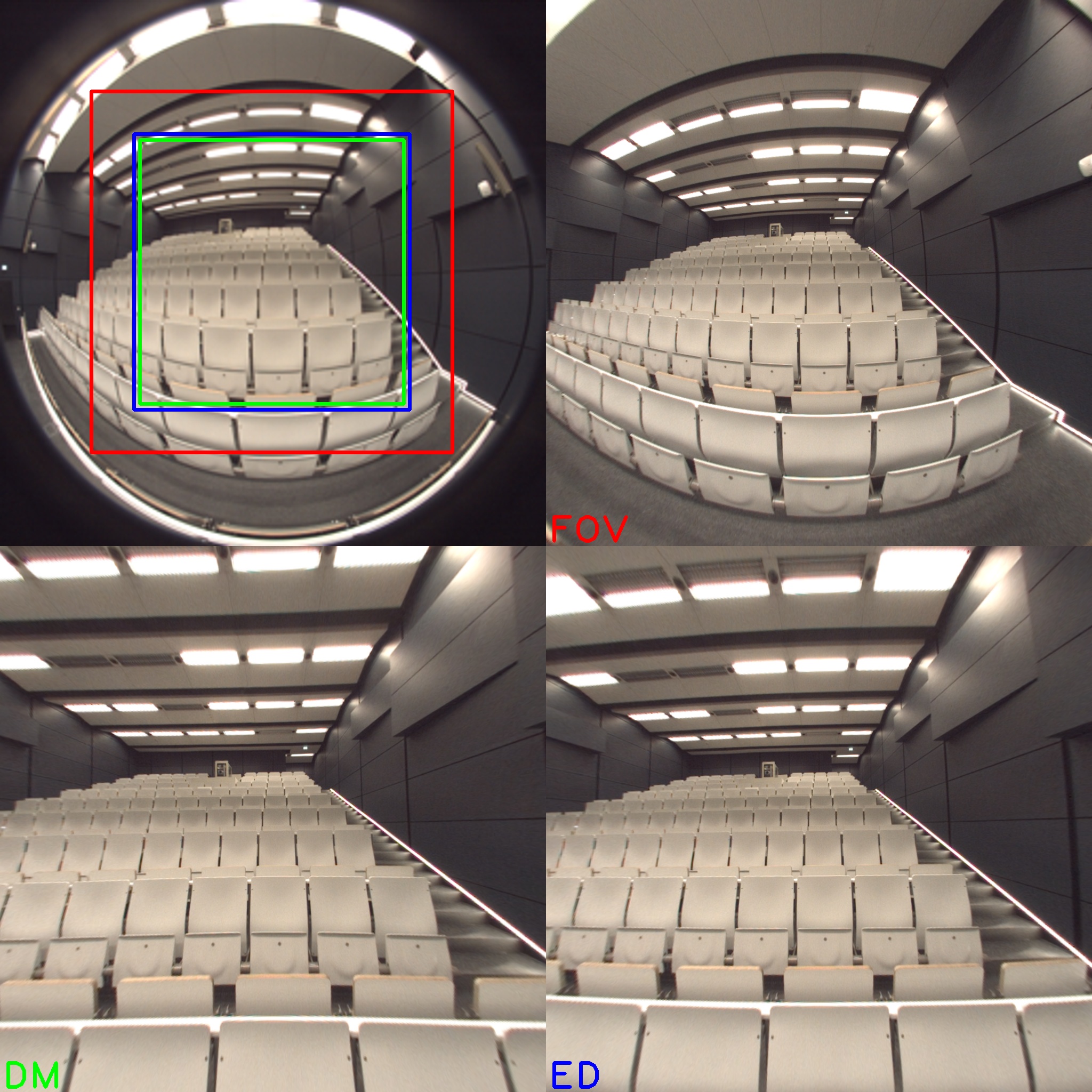 |
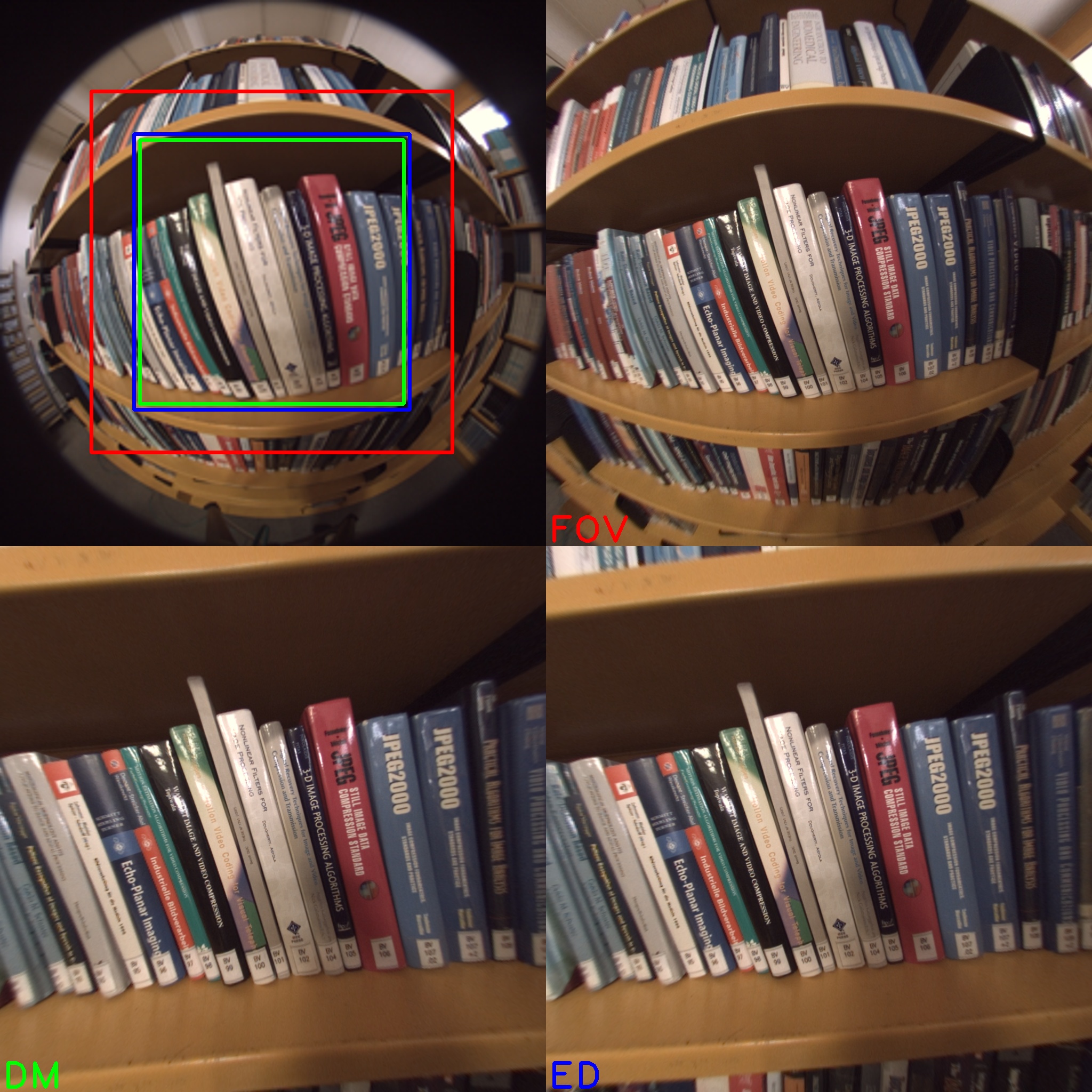 |
5.3 |
